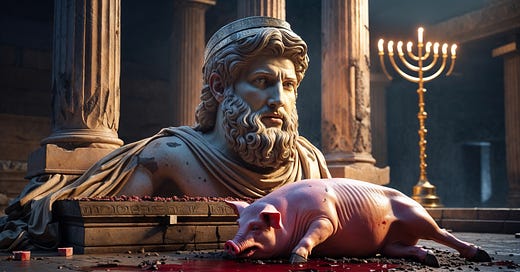The Abomination of Desolation: A Prophecy Misunderstood
Unveiling the Jewish Roots of Yeshua’s Warning and Its Relevance Today
Personal Note
As we light the Hanukkah candles this season, we remember the miraculous victory of the Maccabees, who fought to reclaim and rededicate the Temple after Antiochus IV Epiphanes desecrated it. The story of Hanukkah is more than just an inspiring tale of perseverance—it is a profound reminder of the cost of faithfulness and the ongoing struggl…
Keep reading with a 7-day free trial
Subscribe to Poignant Perspective to keep reading this post and get 7 days of free access to the full post archives.



